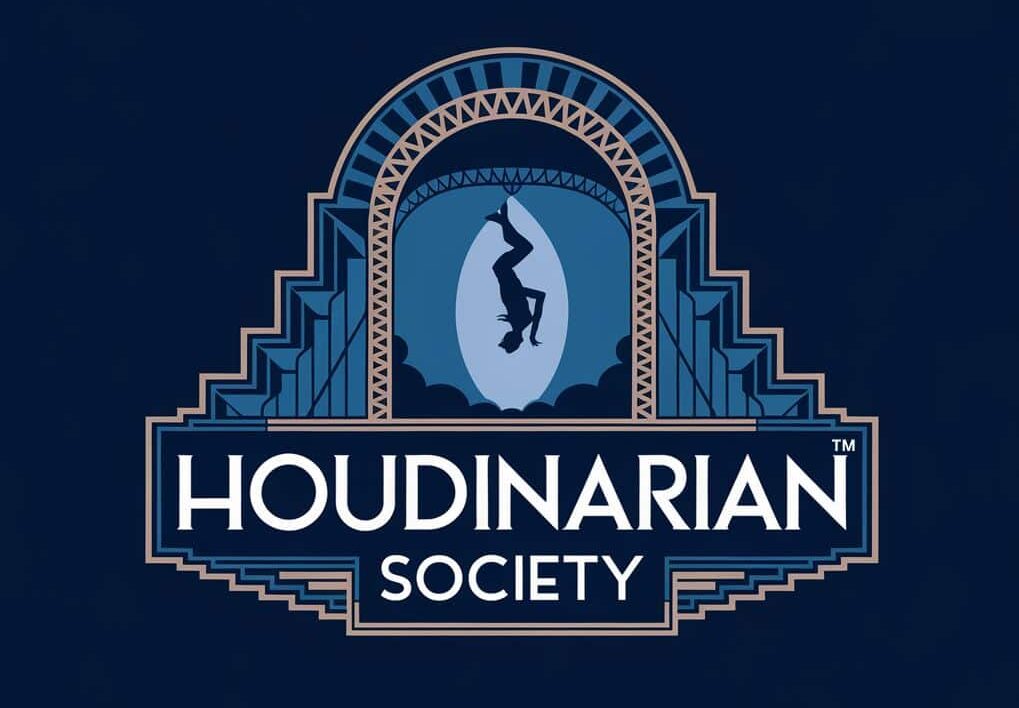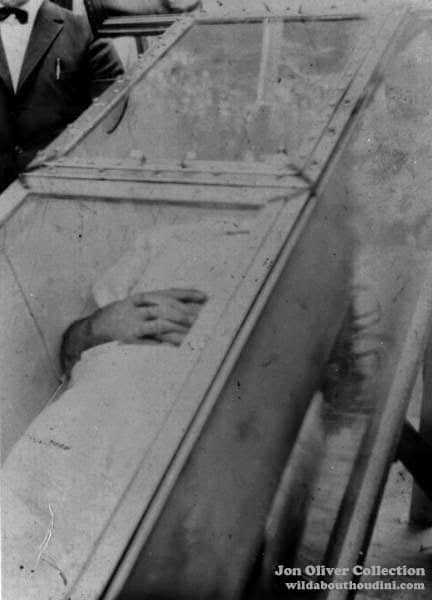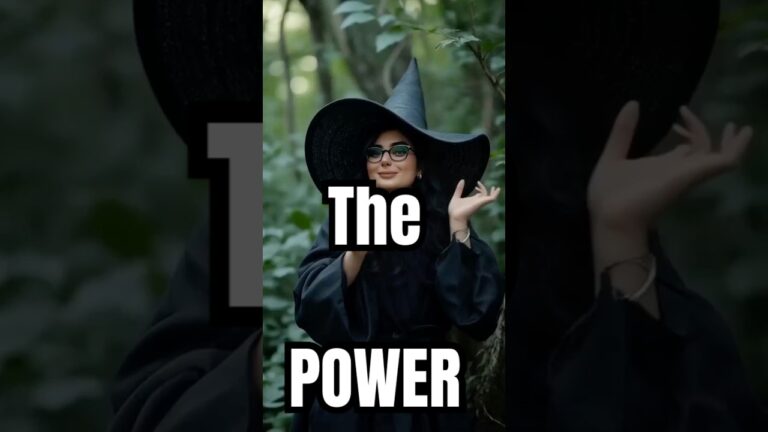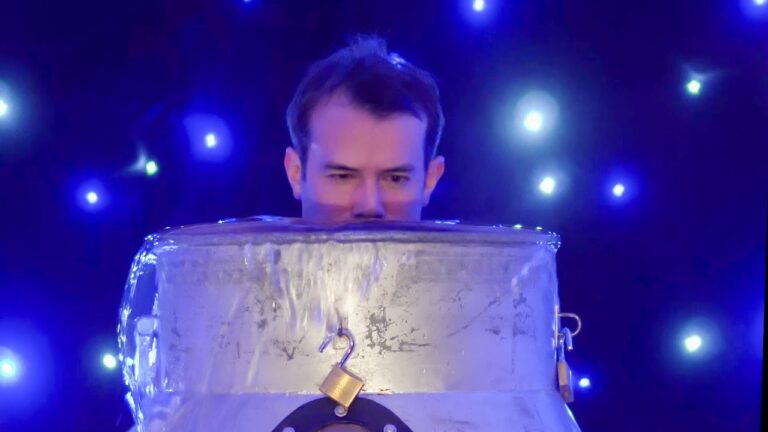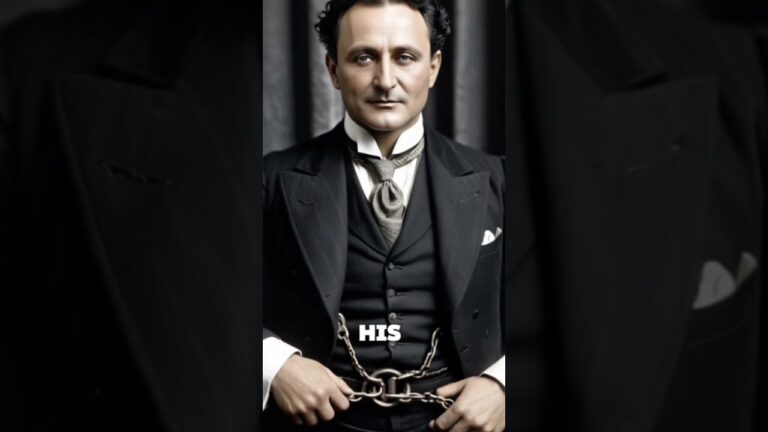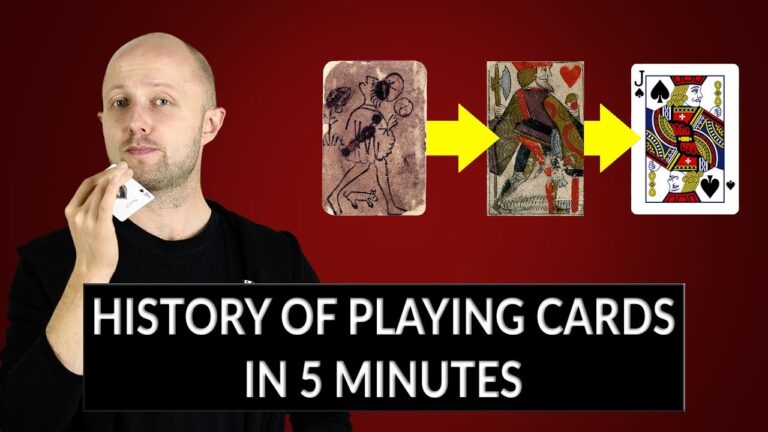Timelines of Houdini’s Life: A Comprehensive Look at His Journey Through Magic and Fame
Harry Houdini’s extraordinary journey from humble beginnings to worldwide fame remains one of magic’s most fascinating stories. Born as Ehrich Weiss in Budapest, Hungary on March 24, 1874, Houdini transformed himself into the most celebrated escape artist and magician in history.
You might know Houdini’s name, but his path to stardom started with small shows and determined practice. His first taste of fame came in 1895 when he and his wife performed their famous trunk escape. In this trick, they traded places inside a locked container.
His life story exemplifies the power of innovation and persistence. From street performances to packed theaters, dangerous escapes to public challenges, you’ll discover how a rabbi’s son became the world’s most famous magician.
Early Life And Background

Harry Houdini’s path from humble beginnings to worldwide fame started in Budapest, where a young boy named Erik Weisz first saw the world. His early years shaped the determination and showmanship that would define his legendary career.
Erik Weisz: The Beginnings In Hungary
Erik Weisz was born on March 24, 1874 in Budapest, Hungary. His father, Rabbi Mayer Samuel Weisz, served as a religious leader while his mother Cecelia managed their growing family.
The Weisz family lived modestly during Erik’s earliest years. As the fourth of seven children, young Erik learned to stand out through his natural charm and energy.
His birth name would later transform into the legendary stage name Harry Houdini, but in these early days, he was simply Erik – a bright-eyed child in a bustling Hungarian household.
Immigration To America: The Weisz Family’s New Start
The Weisz family moved to Appleton, Wisconsin when Rabbi Weisz secured a position at the local synagogue. This dramatic change marked Erik’s first major life transition.
Young Erik faced the challenges of adapting to a new country, learning English, and embracing American culture. The family’s financial struggles meant Erik often took odd jobs to help support his siblings.
Their time in Appleton proved brief, as the family later relocated to New York City. This move would put Erik closer to the entertainment world that would shape his future.
Early Influences And Interests In Magic
As a teenager, Erik discovered his passion for magic through street performances and circus acts in New York. He spent countless hours practicing card tricks and studying the techniques of famous magicians.
You can trace his first professional steps in magic to 1891, when he began performing at local venues. The young performer showed natural talent for entertainment and athletic ability.
He found inspiration in the renowned French magician Jean Eugène Robert-Houdin, later adapting his idol’s name for his own stage persona. Erik’s dedication to mastering illusions grew stronger with each performance.
The Birth of Houdini

Harry Houdini entered the world as Ehrich Weiss on March 24, 1874, in Budapest, Hungary. His family moved to America when he was four years old, setting the stage for his transformation into one of history’s greatest magicians.
Choosing The Name: The Influence Of Jean Eugène Robert-Houdin
Young Ehrich Weiss chose his stage name as a tribute to the French magician Jean Eugène Robert-Houdin. He added an “i” to “Houdin” to create “Houdini,” meaning “like Houdin” in French.
The first name “Harry” came from his childhood nickname “Ehrie,” which evolved from his birth name Ehrich. This transformation marked his first act of reinvention.
Your understanding of Houdini’s name change reveals his deep respect for the magic tradition. The choice showed his ambition to join the ranks of renowned magicians.
First Steps Into Magic: Initial Performances And Struggles
You might be surprised to learn that Houdini’s early career brought little success. He started performing magic tricks at age 17 in New York dime museums and circus sideshows.
His first act was called “The Wild Man,” where he would eat glass and pins. These early shows were far from the spectacular escapes that later made him famous.
He performed in traveling medicine shows and small-time circuses. Some days, he barely earned enough to eat.
The Role Of Bess Houdini: Partner In Life And Magic
Bess Rahner met Houdini when they both performed at Coney Island. They married just two weeks after meeting in 1894.
Bess became essential to Houdini’s act as his stage assistant. Their most famous routine was “Metamorphosis,” where they would swap places in a locked trunk in just three seconds.
Your appreciation of their partnership helps explain Houdini’s success. Bess managed their finances, handled publicity, and kept detailed records of their performances.
Their strong bond extended beyond the stage. They worked as a team in both life and magic, creating one of entertainment’s most successful partnerships.
Rise to Fame in Vaudeville

Young Harry Houdini worked tirelessly to build his reputation in American vaudeville theaters. His early struggles and persistence led to groundbreaking performances that would transform him into a legendary escape artist.
Early Vaudeville Acts: Building A Reputation
You might be surprised to learn that Houdini’s first shows included typical magic tricks – card tricks, disappearing acts, and basic illusions. He performed as part of the Houdini Brothers with his brother Theo, but the act failed to gain much attention.
In these early days, Houdini and his wife Bess created the “Metamorphosis” illusion. This quick-change trunk trick became their signature performance. Bess would be locked in a trunk, and within seconds, they would switch places.
Money was tight. The couple often performed in dime museums and circus sideshows. They lived in boarding houses and sometimes went without meals to save for better props.
Breakthrough Performances: The Handcuff King
Your knowledge of Houdini probably centers on his famous escapes. His career changed when he became the “King of Handcuffs” in the late 1890s.
He began challenging police stations to restrain him. The publicity from these events was priceless. Local newspapers covered his escapes, bringing crowds to his shows.
The act was simple but effective. Houdini invited police officers and local officials to bring their strongest handcuffs. He would escape from them all while hidden behind a curtain.
Key Relationships: Fellow Magicians And Promoters
Martin Beck became crucial to Houdini’s success after seeing him perform in 1899. Beck managed the Orpheum vaudeville circuit and recognized Houdini’s potential.
You can trace Houdini’s national success to Beck’s guidance. He advised Houdini to focus entirely on escape acts and booked him into better theaters with higher pay.
Houdini joined the Society of American Magicians and formed relationships with other performers. These connections helped him refine his act and learn new techniques.
His friendship with fellow magician Harry Kellar proved valuable. Kellar shared technical knowledge and helped Houdini improve his showmanship.
The Golden Age Of Escape Acts
The early 1900s marked a transformative period in magic as Houdini elevated escape artistry into a celebrated form of entertainment. His innovative performances drew massive crowds and inspired countless imitators.
Signature Escapes: Milk Can And Water Torture Cell
The famous Milk Can escape debuted in 1908. You would see Houdini locked inside a massive milk can filled with water, creating suspense as he escaped before drowning.
The Water Torture Cell became his most dangerous feat in 1912. The act involved being suspended upside-down in a glass tank filled with water, with his feet locked in stocks. This performance demonstrated his remarkable ability to hold his breath for over 3 minutes.
Both acts revolutionized magic by combining physical endurance with theatrical drama. Audiences watched in terror as he risked his life night after night.
International Tours: Gaining Worldwide Acclaim
Your knowledge of Houdini’s global reach might start with his groundbreaking European tours. He challenged police departments worldwide to restrain him, escaping from their handcuffs and cells.
In Russia, he amazed crowds by escaping a Siberian prison transport van. German audiences witnessed him break free from the Berlin police’s strongest restraints.
His Australian tour featured dramatic bridge jumps while bound in chains. Each international performance added new elements to test his limits and thrill spectators.
Challenges And Rivalries: Competition In The Magic World
You might be surprised to learn that imitators frequently tried to copy Houdini’s acts. He fiercely protected his reputation by exposing frauds and challenging rivals.
His most notable rivalry was with the Davenport Brothers. He offered $1,000 to anyone who could prove they used supernatural powers in their acts.
He created the Houdini Challenge, daring other performers to duplicate his escapes. None succeeded in matching his combination of skill, strength, and showmanship.
Professional jealousy led some magicians to sabotage his performances. This only made him more determined to perfect his techniques and create even more spectacular escapes.
Personal Milestones And Relationships
Harry Houdini built deep connections with family members and famous figures while navigating complex spiritual beliefs. The personal bonds he formed shaped his career and public image in meaningful ways.
Family Life: Relationships With Parents And Siblings
Born in Budapest to Rabbi Mayer Samuel Weiss and Cecelia Weiss, young Ehrich maintained an especially close bond with his mother throughout his life. Their connection grew stronger after his father’s death in 1892.
His relationships with his siblings were marked by both collaboration and competition. His brother Theo partnered with him early in his career as “The Brothers Houdini” before going separate ways.
The family’s move to Appleton, Wisconsin shaped Houdini’s early years significantly. His father’s struggles as a rabbi in America left a lasting impression on young Ehrich’s drive to succeed.
Friendship With Sir Arthur Conan Doyle
The friendship between Houdini and Sherlock Holmes creator Sir Arthur Conan Doyle began in 1920. Their shared interest in the supernatural brought them together initially.
The bond grew through frequent letters and meetings, but tensions emerged over their opposing views on spiritualism. Doyle firmly believed in supernatural phenomena, while Houdini remained deeply skeptical.
Their relationship suffered its final break when Doyle’s wife claimed to channel Houdini’s deceased mother in a séance. Houdini found this deeply offensive, given his mother couldn’t speak English.
Involvement With The Spiritualist Movement
Houdini’s connection to spiritualism began as genuine curiosity after his mother’s death. You can trace his evolution from interested observer to fierce critic through his investigations.
He devoted significant time and money to exposing fraudulent mediums. His campaign included attending séances in disguise and publishing detailed explanations of common tricks.
His wife Bess played a crucial role in this work, often helping him investigate claims of supernatural powers. The couple made a pact that whoever died first would try to contact the other through a secret code.
Later Years and Legacy
Houdini’s final chapter proved as dramatic as his performances. The legendary magician’s influence stretched far beyond simple tricks, touching American culture, wartime service, and a legacy that persists today.
Final Performances: The Last Great Escapes
In his final years of performing, Houdini created an ambitious three-part show. The show combined magic, escapes, and exposing fraudulent mediums. His signature escape acts became more spectacular and dangerous.
You can trace his most daring feats to this period, including the famous Chinese Water Torture Cell. This act required Houdini to escape while suspended upside-down in a tank of water.
His performances drew massive crowds across America and Europe. Each show pushed the boundaries of what seemed humanly possible.
The Impact Of World War I: Contributions And Patriotism
During World War I, Houdini put his skills to use for his adopted country. He taught American soldiers special techniques for escaping from German handcuffs and restraints.
He performed countless shows for troops, boosting morale while sharing crucial survival skills. His dedication to the war effort showcased his deep patriotism.
The military training programs he developed saved lives. Many soldiers credited his teachings with helping them escape capture during combat situations.
Death And Posthumous Fame: The Enduring Legend
Houdini died on Halloween 1926 from peritonitis after a punch to his abdomen ruptured his appendix. His death created a media sensation and sparked decades of speculation.
Your fascination with Houdini continues through countless books, films, and cultural references. His name remains synonymous with escape artistry and impossible feats.
His legacy lives on in magic performances today. Every handcuff escape and death-defying stunt pays tribute to the techniques he pioneered.
Professional magicians still study his methods and showmanship. The annual séance held on the anniversary of his death keeps his memory alive for new generations.
Influence On Modern Magic
The magic world still revolves around Houdini’s groundbreaking innovations and showmanship. His methods and presentation style created lasting changes in how magicians perform and connect with audiences.
Houdini’s Techniques: Innovations And Legacy
You can see Houdini’s influence in many modern escape acts. His famous Water Torture Cell introduced new safety measures that escape artists still use today.
Houdini revolutionized stage magic by combining physical strength with clever mechanical techniques. His handcuff escapes relied on hidden lock picks and careful misdirection.
He developed the double-fold method for straightjacket escapes. This technique remains the foundation for modern straightjacket escapes.
Modern Magicians Inspired By Houdini
David Copperfield recreated and improved many of Houdini’s famous illusions, including the vanishing elephant trick.
Penn & Teller frequently reference Houdini’s influence on their act, especially in their approach to exposing fake mediums and fraudulent claims.
Criss Angel’s death-defying stunts draw direct inspiration from Houdini’s public spectacles. His water torture escape pays homage to Houdini’s original feat.
Houdini In Popular Culture: Books, Films, And Documentaries
Houdini’s enduring legacy spans multiple forms of media.
Tony Curtis portrayed him in the 1953 film “Houdini,” sparking renewed public interest in magic.
The History Channel produced “Houdini” in 2014, starring Adrien Brody. This miniseries explored his transition from immigrant to international celebrity.
Recent documentaries examine his impact on modern entertainment. Some of these documentaries include “The Story of Magic,” “Houdini: Unlocking the Mystery,” and “American Experience: Houdini.”
Your local magic shop likely stocks books about his methods. Titles like “The Secret Life of Houdini” have become bestsellers.
